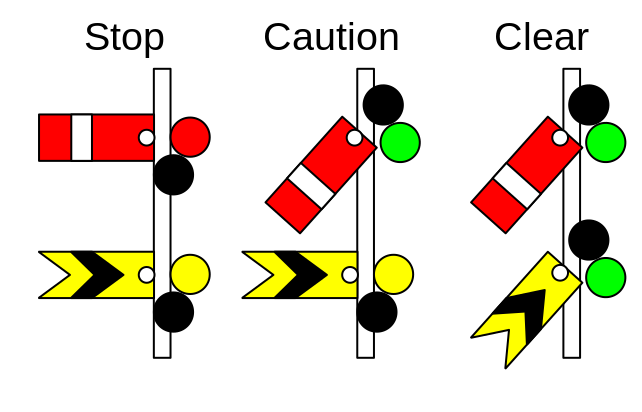Australia’s expansive terrain and extensive railway network rely on robust and dependable railway signalling systems to ensure the safety and efficiency of train operations.
Traditional signalling methods, such as semaphore signals, warner signals and colour light signals, play a pivotal role in the successful and secure transportation along Australia’s railways.
Signalling technology has evolved over the years, from the inception of fixed signals in 1834 to the introduction of mechanical systems, including semaphore signals and double and single wire systems, in the 1860s.
While railway vehicles efficiently navigate steel rail tracks with flanged wheels, fixed tracks pose unique challenges compared to more adaptable transportation modes.
Subsequent advancements in the 1920s brought about colour light signals, eventually leading to the phasing out of fixed trackside signals in contemporary railway systems.
The evolution of signalling from mechanical to cab-based systems — such as communications-based train control (CBTC) and the European Train Control System (ETCS) — underscores the enduring significance of the foundational principles of railway signalling.
This article serves as a starting point for the exploration of railway signalling systems, encompassing global railway signals, including those implemented in Australian railways.
Signalling methods
Traditional signalling methods play a crucial role in safeguarding the efficiency and safety of Australia’s railway transportation.
There are two main methods of railway signalling, namely:
- The time interval method, which involves maintaining a specific time gap between trains to ensure safety. This method may not always be viable owing to factors such as differing train types, speeds, terrain, braking capabilities and stopping points.
- The space interval method, where the track is divided into sections called blocks and entry into a block is controlled to maintain a safe interval between trains.
The entry and exit points of each block are monitored to ensure that a train can only enter a block if it is vacant. Signals play a crucial role in conveying information about block conditions to train drivers.
Fixed signals, aspects and indications
There are several types of fixed signals that convey essential information to control train movements.
Semaphore signals have been an integral part of railway signalling for many years. They consist of a rectangular or fish-tailed arm fixed to a vertical post, with different positions conveying different messages.
Semaphore signals operate in either lower or upper quadrant systems, with the left-hand rule followed in some regions.

Warner signals serve as advance warning signals for train drivers, providing information about approaching stop signals and their conditions.
Warner signals have two aspects, which differ from stop signals during both day and night, allowing drivers to proceed with caution but be prepared to stop if necessary.
The concept of multiple aspect signalling — that is, signalling with more than two aspects — arises from the need to provide drivers with detailed information about the signal conditions ahead. Such systems can offer enhanced safety and operational benefits by providing drivers with a clearer understanding of the signals they encounter.
Under multiple aspect signalling, there may also be a need for a pre-warning signal akin to the warner signal in the two-aspect signalling system. This pre-warning signal is called a distant signal because it is the farthest signal from the station on the approach side.
And for trains approaching a station, the presence of at least one permissive signal and one stop signal is adequate. The stop signal, when switched to the ‘OFF’ position, grants permission for the train to proceed into the station.
The verdict
In the intricate tapestry of Australia’s vast and diverse railway network, the placement and nomenclature of stop signals are threads that weave together the safety and efficiency of train operations.
These designations, whether at station approach ends, departure points or junctions, are tailored to meet specific needs, mirroring the dynamic demands of the railway landscape.
Colour light signals symbolise modernity and efficiency when compared to their semaphore counterparts. With their consistency, heightened visibility and reduced maintenance requirements, these signals illuminate the path for train drivers, ensuring safe and efficient railway operations.
Their adaptable designations, moulded by their specific roles within the railway system, position them as a linchpin of success in an Australian railway context.
Tailored solutions are needed to meet the nation’s unique challenges. Semaphore signals, warner signals, and contemporary colour light signals each play critical roles in informing drivers with essential information and in ensuring train movements occur safely and efficiently.
Rahiman Shaik TFIEAust CEngT is Associate Director Engineering – Rail Systems for Engineering Design Assurance, Sydney Metro.